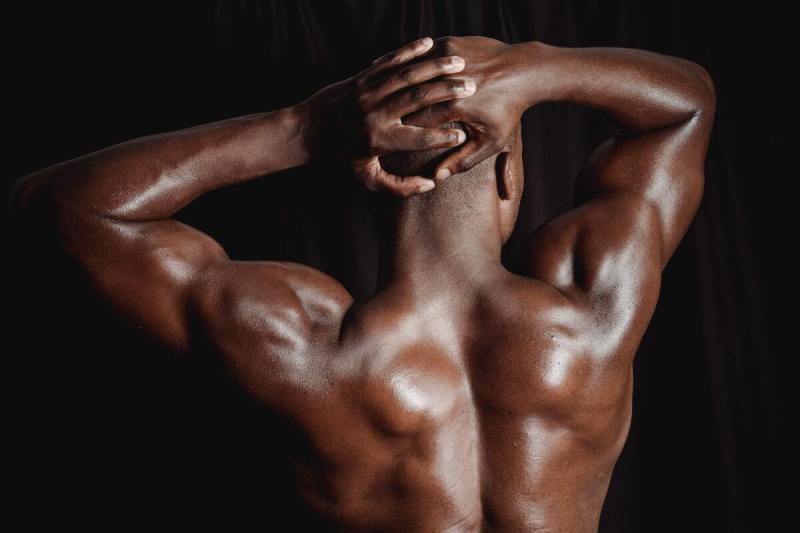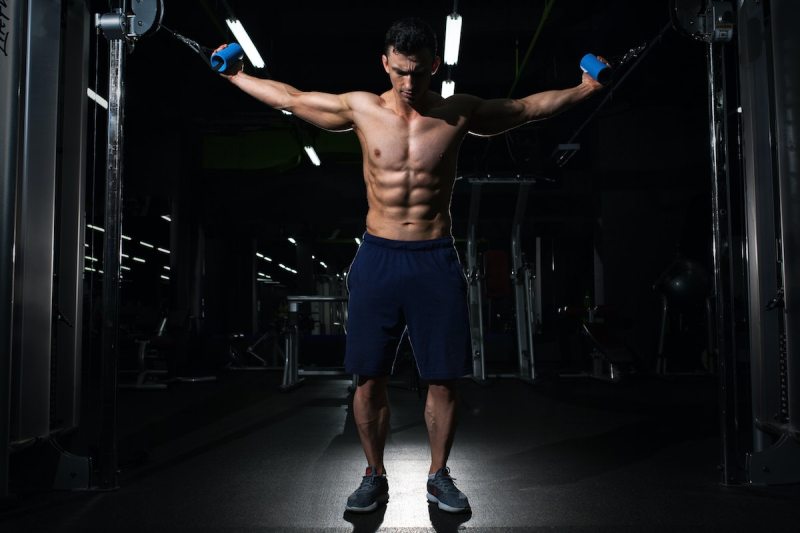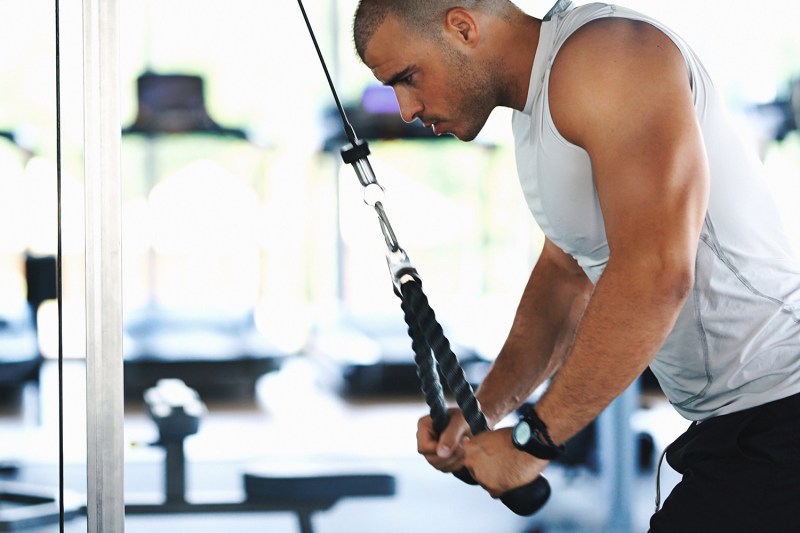When most people hear the phrase “working out,” they may think about large bodybuilders or athletes lifting barbells to build on their already well-defined biceps and abs. While that image certainly fits the bill, there is much more to it than that. Your back muscles are just as important as your arm muscles, and lifting weights isn’t the only way to build muscle. Cable pulley machines are becoming increasingly common in gyms across the world, with many people nowadays using them to develop their back muscles, among other muscle groups. That raises the question: which cable back exercises are best for building a stronger back?
Anatomy of the back

Your back consists of various skeletal muscles that provide structural support for your torso. Their main functions include allowing you to move your arms, shrug your shoulders, and keep your spine straight. The most commonly known back muscles are as follows:
- Latissimus dorsi (“lats”) that comprise your sides
- Levator scapulae, which are connected to your shoulder blades
- Rhomboids, where your back and shoulders come together
- Trapezius muscles (“traps”)
Benefits of using cables

Improved posture
Because your traps help you maintain good posture, back cable exercises that focus on strengthening these muscles can reverse bad posture. This will allow you to sit or stand up straight; no more slouching and muscle pain!
Focus on multiple muscle groups
Even if you’re exercising most of your back muscles, that’s no excuse to neglect your other muscle groups. Fortunately, most workouts that can be done using a cable machine focus on more than your back muscles; some also work on your shoulders, biceps, hamstrings, and glutes simultaneously with your lats and traps.
Prevent muscle damage
Strained and/or stiff back muscles can be the result of lifting heavy objects improperly or overuse of these specific muscles. More common effects of a strained back include cramps or muscle spasms. In more severe cases, it can lead to muscle paralysis that may hinder your movement.
7 cable back exercises to add to your routine

1. Lat pulldowns
This simple exercise helps to develop the muscles in your back, arms, and abs through a similar range of motion as a traditional pull-up on a bar. This should be performed using a weight that you would be comfortable with for ten reps.
Instructions:
- Stand up and grab the handle before sitting down, making sure your arms are extended and your grip is slightly wider than shoulder-width.
- While firmly grasping the handle, inhale and bring your shoulders back and down. Pull the weight down to your upper chest by using your elbows, but make sure they remain tucked in and lined up with your torso. Hold the contraction for a moment.
- While exhaling, extend your arms back until your elbows are straight.
- Repeat as desired.
2. Seated cable rows
This exercise is performed on a weighted horizontal cable machine as opposed to a vertical one. This can help develop the muscles in both your middle back and your forearms.
Instructions:
- Sit on the bench and grasp the handle of the cable. Make sure your knees are slightly bent so your arms are extended while your back remains straight.
- Bracing your abdominal muscles, pull the handle towards the lower abdomen. Keep your chest out and squeeze your shoulder blades.
- Return the handle back to its original position by letting your arms extend.
- Repeat as desired.
IMPORTANT HEALTH AND SAFETY NOTE: For this particular exercise, your back and torso should always remain straight; never bend your back or move your torso.
3. Straight-arm pulldowns
This variation of lat pulldowns primarily targets the muscles in your middle and upper back, but uses a greater range of motion. Similar to lat pulldowns, it also helps to develop your abs, biceps, and shoulders.
Instructions:
- Stand up and grab the handle before sitting down, making sure your arms are extended and your grip is slightly wider than shoulder-width. Slightly lean forward at the hips.
- Keeping your arms straight, exhale and pull the handle down towards your quads (thighs). Be sure to squeeze your lats during this step. By the time the handle reaches your thigh, your arms should be slightly bent now.
- To bring the handle back to its starting position, extend your arms until they are over your head again. Keep your arms straight as you allow the handle to move.
- Repeat as desired, but rest for a second between reps.
4. Standing cable rows
Just like seated cable rows, this exercise helps build various muscles in your back, including your lats, deltoids, and traps. What separates this particular exercise from other rowing variations is that it also challenges your core and lower body.
Instructions:
- Grip the handle with both hands and step back until your arms are extended and at chest height. Set your feet shoulder-width apart and slightly bend your knees.
- Pull the handle towards your midsection just below your chest while drawing your shoulder blades together. Keep your elbows close to your sides.
- Hold the contraction for a moment, and then return the handle back to its original position by letting your arms extend.
- Repeat as desired.
5. Face pulls
This relatively simple exercise targets your posterior deltoids.
Instructions:
- Reach up and grasp the handles with both hands with your palms facing in, then pull the rope enough to start lifting the weight from the stack of the pulley machine. Step back until your arms are fully extended, and lean back slightly at roughly 20 degrees. Roll back your shoulders, making sure they’re not rolled forward or hunched.
- Pull the handles towards your forehead. Your elbows should be moving toward your sides.
- To return back to the starting position, slowly extend your arms. Do not let your shoulders or chest roll forward during this step.
- Repeat as desired.
6. Single-arm cable pulldowns
If one side of your back is more toned or developed than the other, then the single-arm variant of lat pulldowns may be for you.
Instructions:
- Stand up and grab the handle before sitting down. Make sure your arms are extended, your torso is fully erect, and your chest is out. Look straight forward and lean back 10-15 degrees.
- Lower your shoulders to avoid shrugging your neck.
- Inhale and pull the handle to your upper chest by pulling your elbow back and downward.
- Hold the contraction for a moment, then return the handle to the starting position by slowly extending your arm.
- Repeat as desired.
7. Cable pullthroughs
Although this exercise puts more focus on toning your glutes and hamstrings, it does give you an opportunity to also strengthen your lower back muscles. It is recommended to do this exercise at a lower setting on the pulley machine.
Instructions:
- Face away from the machine and grab the handle from between your legs. Your palms should face each other.
- Take a few steps away from the machine so the pulley starts to lift the weight off of the weight stack. Your feet should be wider than shoulder-width and pointed outward no more than 15-30 degrees.
- Bend at the waist and push your hips back towards the machine until you feel your hamstrings being stretched. Keep your back straight as you move.
- Hold the contraction for a moment, then return to the starting position by slowly extending at the hips. Squeeze your glutes at the end of this movement.
- Repeat as desired.
Tips for building a bigger back

Eat plenty of protein
Eating foods high in protein is beneficial to working out, as it allows your muscles to recuperate and repair any damage sustained through exercise. It also allows your body to maintain muscle definition and prevent any regression from building your back muscles.
Follow a consistent routine
Consistency is key to making progress. You can occasionally change certain parts as you progress, but stick to your workout routine for the best results. Spontaneously changing it every day for no real reason will likely slow down your progress.
Lift heavy
These exercises may seem easier (and less taxing on your body) if you always lift as light as possible, but this won’t help you in the long run. Challenge yourself and lift as heavy as you physically can with good form. As you grow more comfortable with certain weights, be sure to increase the workload as you go.
Get enough rest
Working out every day is actually counterproductive; spending too much time working out prevents your body from being able to recover and could even hurt your body. Give your body a few days each week to rest, and never push yourself to work out if you feel sick.




